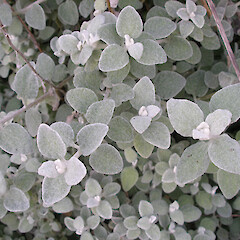Helichrysum petiolare
Family
Asteraceae
Flora category
Vascular – Exotic
Structural class
Herbs - Dicotyledonous composites
Conservation status
Not applicable
Habitat
Has been collected from sand dunes, the margins of peat bogs, on yellow-brown and yellow-grey earths, cliff faces, and in urban situations. Once established very competitive, even in indigenous shrubland
Detailed description
Scrambling or trailing perennial with ovate-deltate leaves 2-3 cm long. Leaves densely hairy, either grey or greenish yellow (Webb et al 1995).
Flower colours
Cream, Yellow
Year naturalised
1991
Origin
S. South Africa
Etymology
helichrysum: From the Greek words helios ‘sun’ and chrysos ‘gold’, referring to the colour of the flowers of some species
Reproduction
Spreads by layering and seed
Seed
Can seed freely in cultivation when more than one clone is present (Webb et al 1995)
Dispersal
Grows from wind dispersed seed, layering and/or vegetative spread from garden refuse dumps
Tolerances
Appears to prefer coastal and lowland habitats. However, very tolerant of a range of climatic extremes and will even grow in waterlogged soils such as peat. Appears resistent to mild frosts



